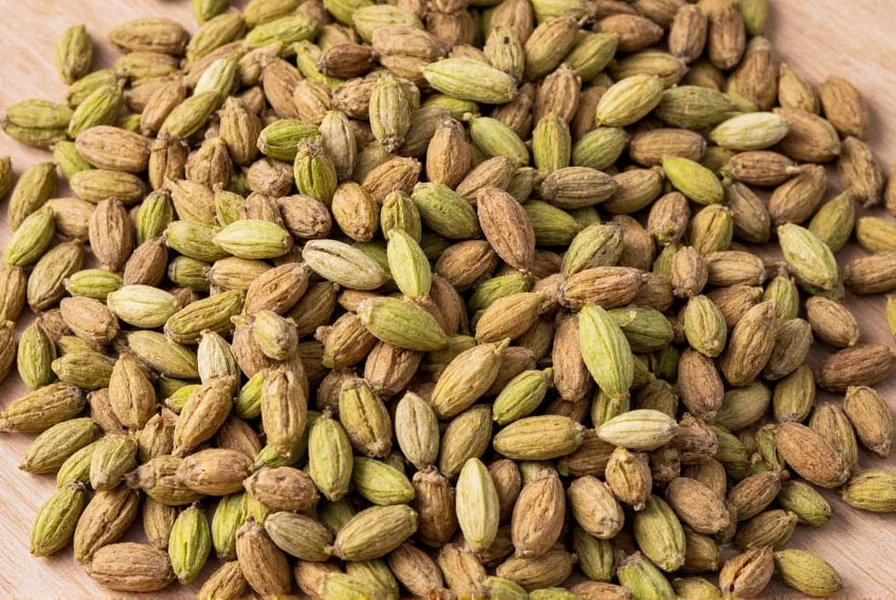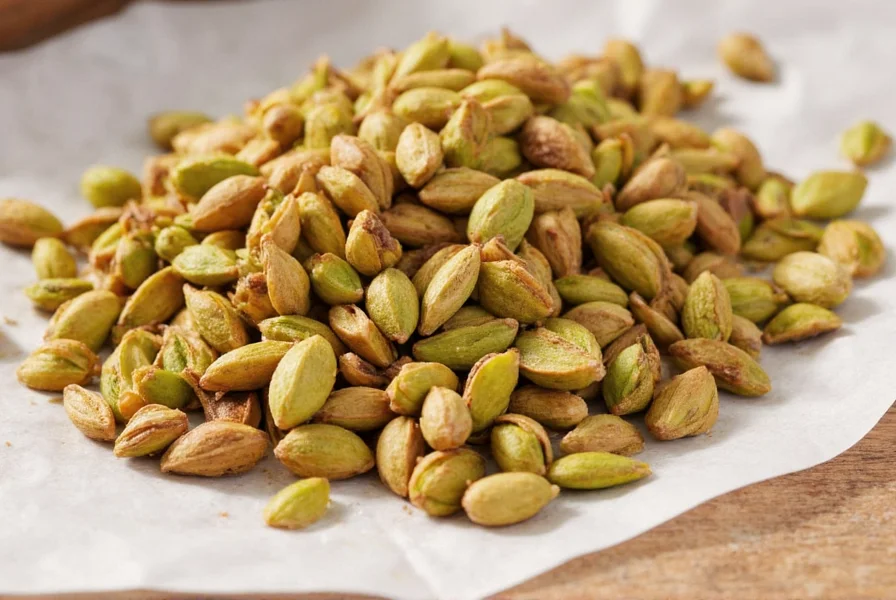
Cardamom has a complex flavor profile combining citrus notes (like lemon and orange zest), floral undertones (reminiscent of rose or lavender), subtle spicy warmth (similar to clove but milder), and natural sweetness without sugar. It's simultaneously earthy yet bright, creating a unique balance that's hard to replicate with other spices.
Introduction
If you've ever sipped on a warm chai tea or bitten into a sweet cardamom bun, you know this spice brings magical flavor to any dish. But what exactly makes cardamom so distinctive? This guide breaks down its taste, chemistry, and culinary uses to help you master this "queen of spices."
What Is Cardamom?
Native to India and Sri Lanka, cardamom is one of the world's oldest and most expensive spices—second only to saffron and vanilla. There are two main types:
- Green Cardamom: Sweet, fragrant, and versatile for both sweet and savory dishes.
- Black Cardamom: Smokier and more intense, ideal for robust savory recipes like curries and biryanis.
The pods contain tiny black seeds where all the flavor resides. Use whole pods, crush them slightly, or grind seeds into powder for recipes.
The Unique Flavor Profile of Cardamom
Cardamom's taste is a symphony of flavors:
- Citrus notes — reminiscent of lemon and orange zest
- Floral undertones — like rose or lavender
- Spicy warmth — similar to cinnamon or clove, but subtler
- Sweetness — without being sugary
These elements create an earthy yet bright profile that balances perfectly in both sweet and savory dishes.
Chemical Composition Behind the Taste
The key compounds responsible for cardamom's distinct flavor include:
- 1,8-Cineole – Provides a fresh, cooling effect
- Linalool – Adds floral and sweet tones
- Alpha-Terpineol – Enhances the minty-citrus sensation
Cardamom vs Other Spices: A Flavor Showdown
| Spice | Taste Description | Similarity to Cardamom | Best Used With |
|---|---|---|---|
| Cardamom | Fragrant, citrusy, floral, subtly spicy | N/A | Tea, desserts, rice dishes, curries |
| Cinnamon | Woody, warm, mildly sweet | Moderate (shared warmth) | Baked goods, oatmeal, stews |
| Clove | Intense, medicinal, sweet-spicy | Some overlap in spiciness | Pumpkin pie, mulled wine, Indian dishes |
| Nutmeg | Earthy, nutty, mildly sweet | Low (less floral) | Béchamel sauce, cookies, eggnog |
| Allspice | Blend of cinnamon, clove, nutmeg | Closest match | Meat rubs, Caribbean cuisine |
How to Use Cardamom in Cooking
From Scandinavian pastries to Indian masalas, cardamom finds a place in diverse cuisines. Here are some ways to bring this exotic flavor into your kitchen:
- Add to Baking: Sprinkle a pinch of ground cardamom in cakes, muffins, and cookies for a floral kick.
- Spice Up Your Coffee: Crush a pod and add it to your coffee grounds before brewing for an aromatic twist.
- Infuse Rice & Pilaf: Add a couple of crushed pods while cooking rice to elevate its aroma.
- Enhance Chai Tea: Cardamom is a staple in Indian chai — just crack open a few pods and simmer with tea leaves.
- Make Homemade Garam Masala: Mix cardamom with cumin, coriander, cloves, and cinnamon for a custom spice blend.

Buying Guide: Choosing the Best Cardamom
When shopping for cardamom, quality matters — here's what to look for:
Forms of Cardamom
There are three main forms available:
- Whole Pods: Freshest option; ideal for infusing flavor into liquids or grinding at home.
- Ground Cardamom: More convenient but loses potency faster; great for baking or everyday cooking.
- Seeds (Decorticated): The inner black seeds; less aromatic than whole pods but still usable.
Top Picks for Quality Cardamom
McCormick Whole Green Cardamom Pods
- Features: Sustainably sourced, strong aroma, easy to store
- Advantages: Long shelf life, perfect for DIY grinding
- Use Cases: Ideal for chai, curries, and spice blends
- Audience: Home cooks and seasoned chefs alike
- Occasion: Everyday cooking and special festive meals
Spice Islands Ground Cardamom
- Features: Consistent texture, potent fragrance
- Advantages: Ready-to-use, saves prep time
- Use Cases: Great for baking and quick stir-fries
- Audience: Busy cooks and beginners
- Occasion: Weeknight dinners and holiday treats
Artisan Organic Green Cardamom
- Features: Premium quality, organic certification
- Advantages: Strongest aroma and flavor
- Use Cases: High-end dishes and gourmet baking
- Audience: Foodies and professional chefs
- Occasion: Dinner parties, cultural festivals
Pro Tips for Using Cardamom Like a Pro
- Don't overdo it: A little goes a long way. Start with small amounts and adjust to taste.
- Grind fresh: For the strongest flavor, grind your own pods using a mortar and pestle or a spice grinder.
- Toasted for extra depth: Lightly toast whole pods in a dry pan to intensify their aroma before crushing.
- Store properly: Keep cardamom in an airtight container away from light and moisture to preserve its potency.
- Pair wisely: Combine with cinnamon, nutmeg, ginger, or vanilla for a layered flavor profile.
Frequently Asked Questions
What does cardamom taste like exactly?
Cardamom has a complex flavor profile that combines citrus notes (similar to lemon and orange zest), floral undertones (reminiscent of rose or lavender), subtle spicy warmth (like a milder version of clove), and natural sweetness without sugar. It's simultaneously earthy yet bright, creating a unique balance that's hard to replicate with other spices.
How would you describe cardamom's flavor in simple terms?
Imagine a refreshing citrus aroma combined with floral elegance, a gentle warmth (but not heat), and a subtle sweetness. It's often described as the 'queen of spices' because of its sophisticated, multi-layered flavor that enhances rather than overwhelms other ingredients.
Can I substitute cardamom with another spice?
While no spice perfectly replicates cardamom's unique profile, allspice offers the closest approximation with its blend of cinnamon, nutmeg, and clove notes. For baking, a mixture of equal parts cinnamon, nutmeg, and a pinch of cloves can work in a pinch. However, the citrus-floral elements will be missing, so the substitution works best in recipes where cardamom isn't the star flavor.
Is green cardamom the same as black cardamom?
No, they have distinct flavor profiles. Green cardamom is sweet, floral, and citrusy with subtle warmth, making it versatile for both sweet and savory dishes. Black cardamom has a much stronger, smoky, almost camphor-like flavor from being dried over open flames, which makes it better suited for robust savory dishes like meat curries. They're not interchangeable in recipes that specify one type.
Why does cardamom taste different in sweet versus savory dishes?
Cardamom's complex chemistry interacts differently with various ingredients. In sweet applications, its natural floral and citrus notes shine through, creating a bright, refreshing quality. In savory dishes, especially those with fats like ghee or coconut milk, its warming properties become more pronounced while the citrus notes mellow, creating a more rounded, earthy flavor profile. The temperature and cooking time also affect which flavor compounds are most prominent.
How much cardamom should I use in a recipe?
Typically, 1-2 pods (or ⅛ to ¼ tsp ground) per serving is enough for most dishes. Cardamom is potent, so it's better to start with less and add more if needed. For baking, use ⅛ tsp per cup of flour. In beverages like chai, 2-3 pods per cup provides ideal flavor. Remember that black cardamom is stronger than green, so use about half as much when substituting.
Does cardamom go bad, and how does that affect its taste?
Whole cardamom pods retain their flavor for up to a year when stored properly in an airtight container away from light and heat. Ground cardamom loses potency more quickly, typically within 6 months. As cardamom ages, its bright citrus and floral notes fade first, leaving behind a duller, more one-dimensional flavor. You'll know it's past its prime when the vibrant aroma is significantly diminished.
Conclusion
Cardamom's unique blend of citrus, floral elegance, subtle spice, and natural sweetness makes it a versatile spice that elevates everything from morning coffee to evening curries. With our guide, you're now equipped to confidently explore this "queen of spices" in your kitchen.










 浙公网安备
33010002000092号
浙公网安备
33010002000092号 浙B2-20120091-4
浙B2-20120091-4